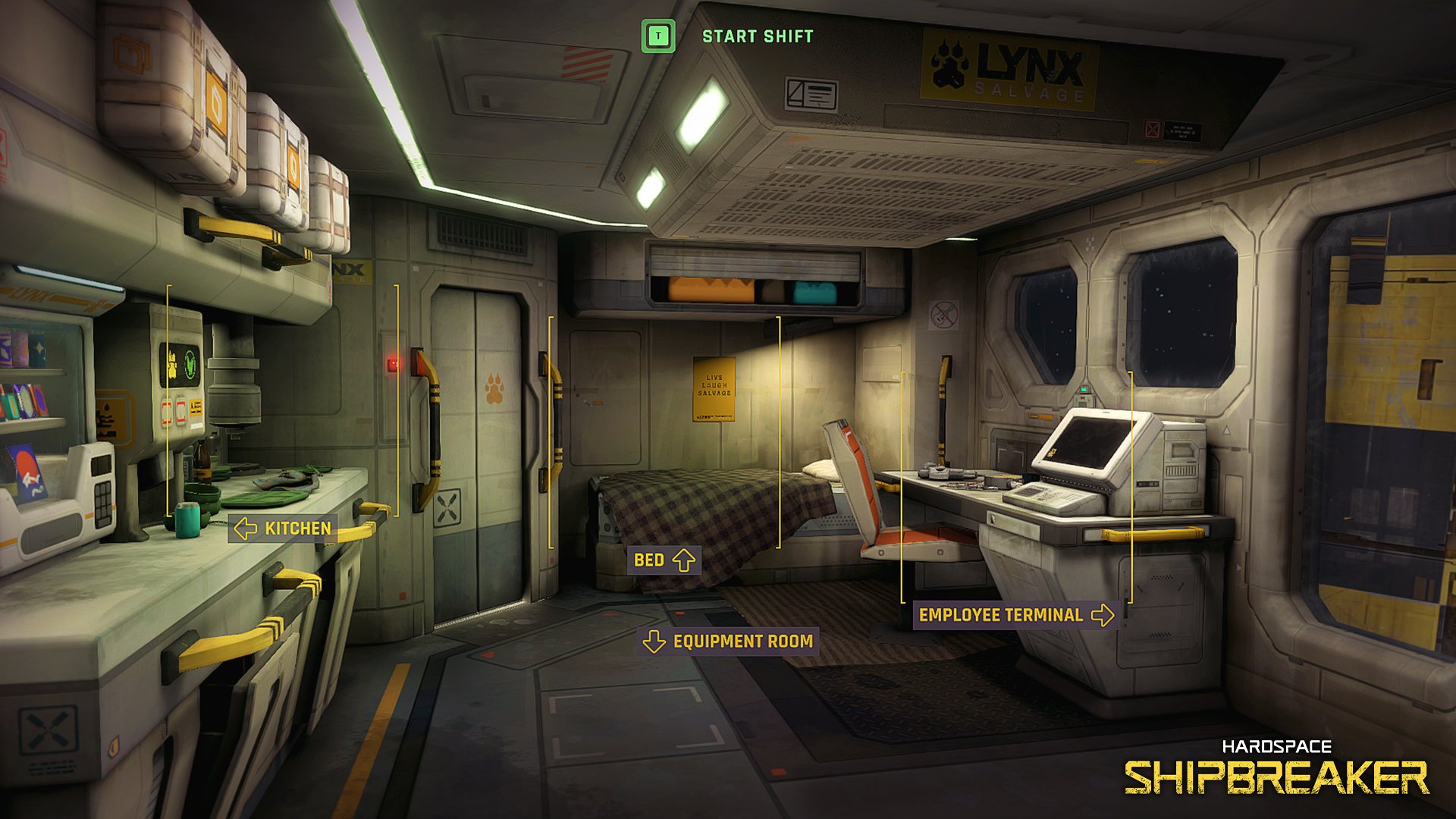Hardspace: Shipbreaker (PC) Review
Developer: Blackbird Interactive
Publisher: Focus Home Interactive
Release Date: May 24th 2022
Platform: Windows/Steam
Price: $34.99
Home sweet Habitation Module.
Your story begins in a dystopian future where, to escape the squalor of Earth, you apply for a position with the Lynx Corporation as a “shipbreaker” where you will scrap decommissioned ships and be paid based on the value of what you have salvaged. Unfortunately, after your transport to orbit, training and many forms in triplicate, you will be deep in debt to the company. This forces you to work as rapidly as possible because you will need to earn money not only to live but to pay off your debt. There is even an interesting take on “life insurance” but for the company, not you. You see when you inevitably pull a Wile E. Coyote into the side of a bulkhead the company will produce a clone of you (for an additional fee of course) that can pick up right where you left off. In other words, you literally owe your life to the company store.
So much for him, send in the clones.
Early in the game you undergo training, you’ll learn the tools of the trade and ways to cut through the ships to salvage the materials. Tools such as modular cutting torches, gravitational tethers, and a grappling gun. Basic information will be displayed by your suit’s HUD showing entry points, which material goes to which “bin” and how to disconnect or remove everything. Using your grapple tool, you pick up the components and push, pull or “boop” them into the appropriate bin. Each time you deposit something into the right bin, you get paid a fee depending on the material. Aluminum goes to the furnace, and other objects to the “Processor”. Just don’t get too close, as you can get sucked in, smelted into your component atoms and thus need one of those clones.
Because you owe your soul to the company store.
But wait, there’s more! You can run out of oxygen, if you don’t pay attention to your consumables. You can be mashed to paste if you don’t keep track of your movement and that of nearby objects, you can be blown to smithereens if you let your cutter overheat, and it touches off something else. And of course, you can get explosively decompressed, a fun lesson in kinetic energy where you can suffer an embolism, get smacked by flying debris or sucked out into the soul crushing darkness of space. In other words, the game is a form of lower education. It teaches you through painful experience rather than patient instruction. You really have to pay attention, or you end up exploring the universe as a rapidly diffusing cloud of chunky salsa.
At the end of your shift, you go back to your Habitation Module or “hab” for a Summary of your progress. You see your earning and progress toward more tools and upgrades, giving you the chance to take on larger, more profitable contracts. Graphics are good and surprisingly well scaled, that is, the relative size and position of objects in three-dimensional space is well represented.
The sounds include realistic effects for all the tools and different materials, while the soundtrack is pseudo-country style that evokes the old television program Firefly. Controls require a bit of a learning curve just to deal with the three-dimensional world, but are close enough to the traditional WASD layout that most players will adapt without too much trouble.
If I see an orange cat I’m outta here.
Bottom line, this is an outstanding game with an interesting take on several game types. Its more realistic than most “space” games particularly if you make allowances for the sci-fi technologies. It's challenging and engaging, with just enough adventure to keep things moving. I do have some doubts about the game replayability, though. You can only take apart so many ships, even proceduraly generated ones. The developers try to keep this fresh with unpleasant surprises like “ghost ships” which have very naughty AI aboard that will do fun little pranks like locking doors behind you and venting the ships athmosphere to space. Even so, the puzzle side of the game ends up dominant. My compliments to the development team.
The Good:
Satisfying
Original
Challenging
The Bad:
Steep Learning Curve





